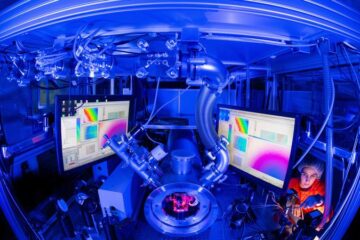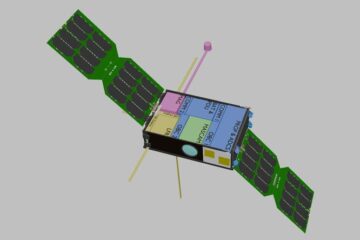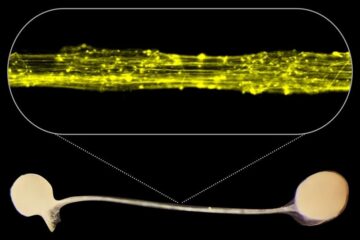Evolution of Whale Hearing Unfolds in Fossil Record

An international team of scientists has traced the evolution of hearing in modern cetaceans (whales, dolphins and porpoises). “This study of the early evolution of whales demonstrates the changes that took place in whales’ outer and middle ears, required for the transition from a land-based to a marine-based existence,” said Rich Lane, director of the National Science Foundation (NSF)’s geology and paleontology program, which funded the research.
The findings are published in the Aug. 12 issue of the journal Nature.
The ear is the most important sense organ for modern toothed whales, say scientists, because these whales locate their prey using echolocation. Directional hearing is critical: A blind such whale could find food without much trouble; a deaf one would starve.
The study documents how hearing in these whales evolved. The research is based on cetacean fossils representing four groups of early whales. The earliest cetaceans, pakicetids (those that swam in ancient seas 50 million years ago), used the same sound transmission system as did land mammals, and so had poor underwater hearing. More recent cetaceans, remingtonocetids and protocetids (those that lived 43- 46 million years ago), retained the land-mammal system, but also developed a new sound transmission system.
“The fossils document the ways in which cetacean hearing has changed, starting with ear fossils of whales’ land ancestors and ending with the ear of near- modern looking whales,” said Hans Thewissen, an anatomist at the Northeastern Ohio Universities College of Medicine (NEOUCOM). Thewissen and NEOUCOM researcher Sirpa Nummela led the study.
The newer system was similar to that of modern whales. The later whales could hear better in water than pakicetids could, and could also hear in air, but hearing in both media was compromised by the existence of two systems. With the advent of basilosauroids (approximately 40 million years ago), the old landmammal ear disappeared, and the modern cetacean sound transmission system began its development. Although basilosaurids were not echolocators (they lacked the soundemission equipment of later echolocators), they had taken a major step forward in refining underwater sound reception.
In addition to Thewissen and Nummela, the research team includes Sunil Bajpai, Indian Institute of Technology, Roorkee; S. Taseer Hussain, Howard University College of Medicine; and Kishor Kumar, Wadia Institute of Himalayan Geology, Dehradun, India. Support for the project was also provided by the Department of Science and Technology, India.
Media Contact
More Information:
http://www.nsf.govAll latest news from the category: Studies and Analyses
innovations-report maintains a wealth of in-depth studies and analyses from a variety of subject areas including business and finance, medicine and pharmacology, ecology and the environment, energy, communications and media, transportation, work, family and leisure.
Newest articles

Caution, hot surface!
An international research team from the University of Jena and the Helmholtz Institute Jena are demystifying the mechanisms by which high-intensity laser pulses produce plasma on the surface of solids….

Exploring the Asteroid Apophis With Small Satellites
In five years’ time, a large asteroid will fly very close to Earth – a unique opportunity to study it. Concepts for a national German small satellite mission are being…

First model of the brain’s information highways developed
Our human brain is not only bigger and contains more neurons than the brains of other species, but it is also connected in a special pattern: Thick bundles of neurons…





















